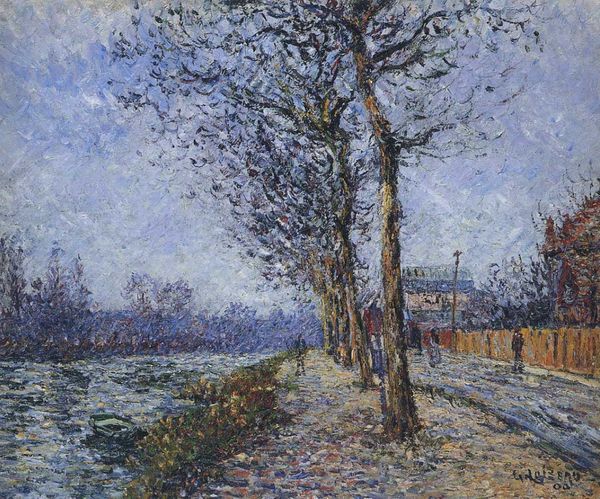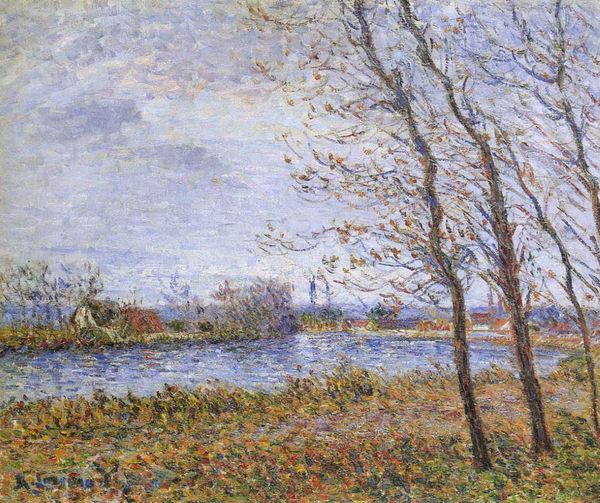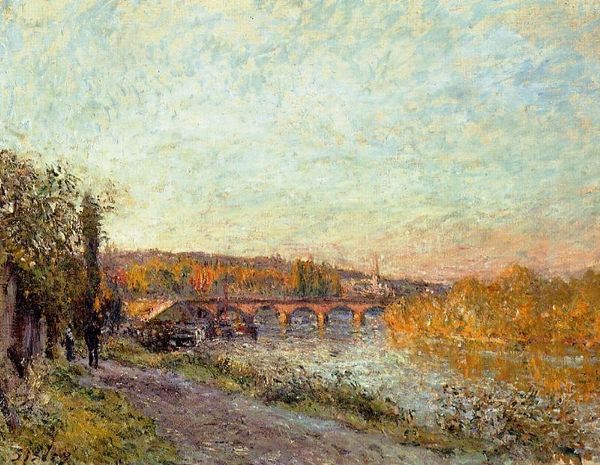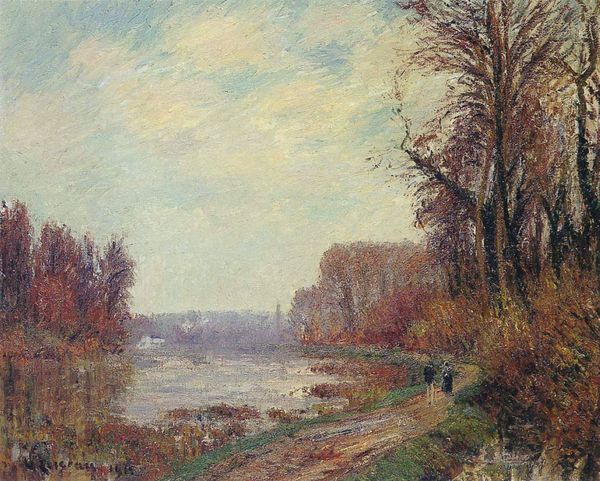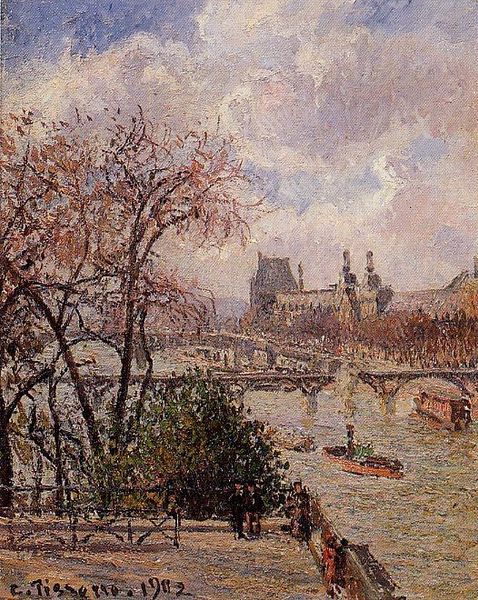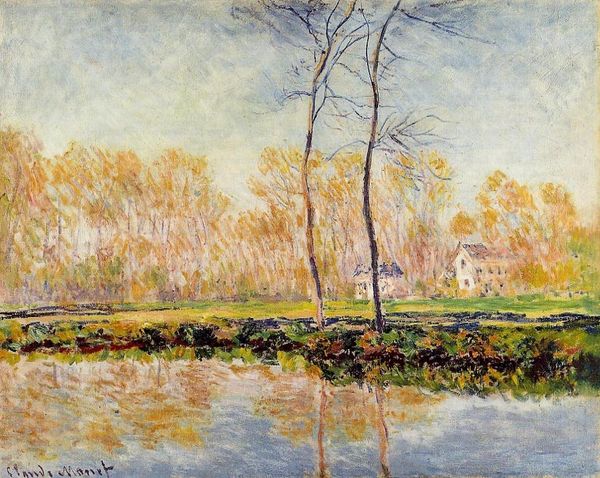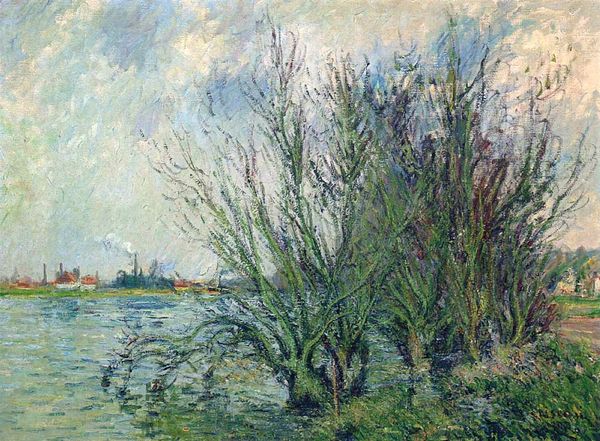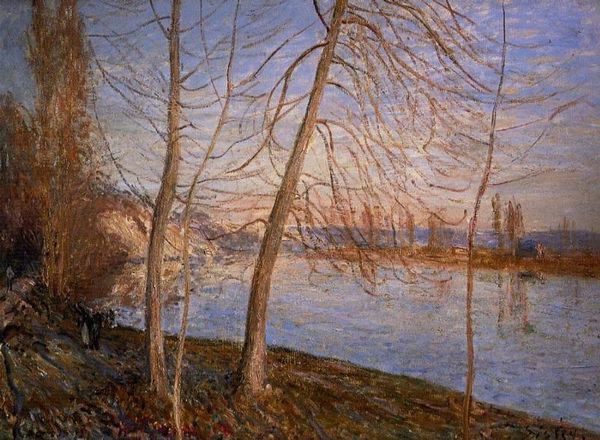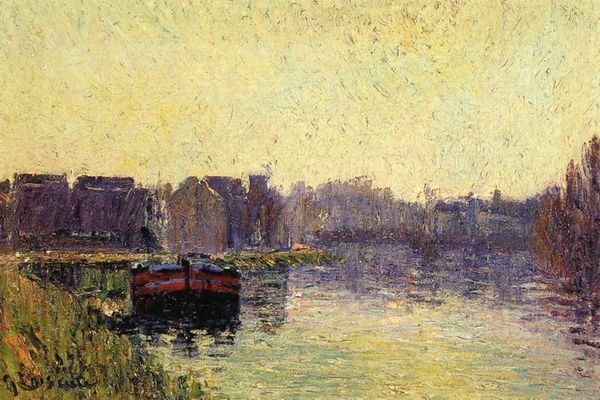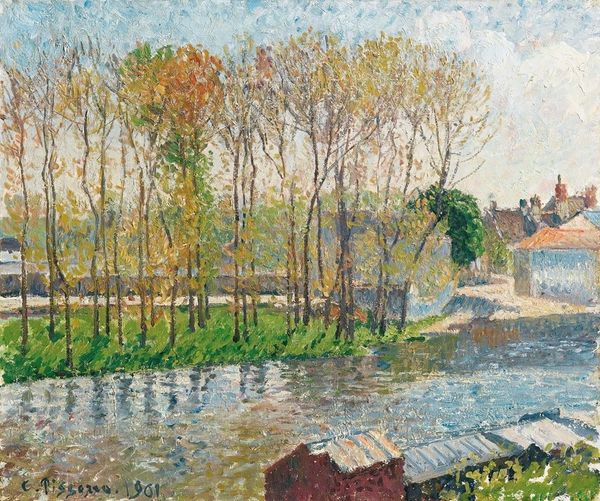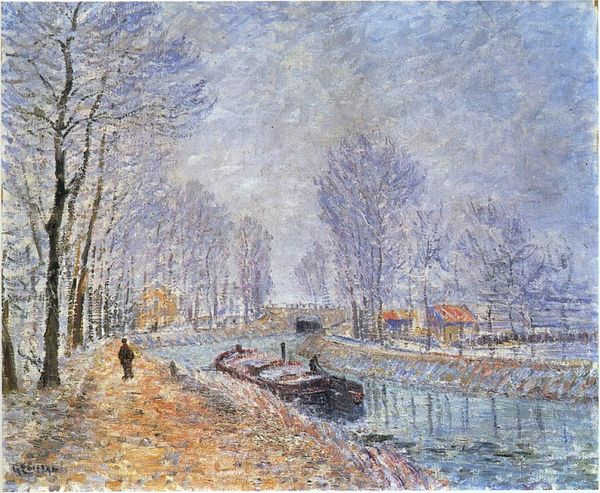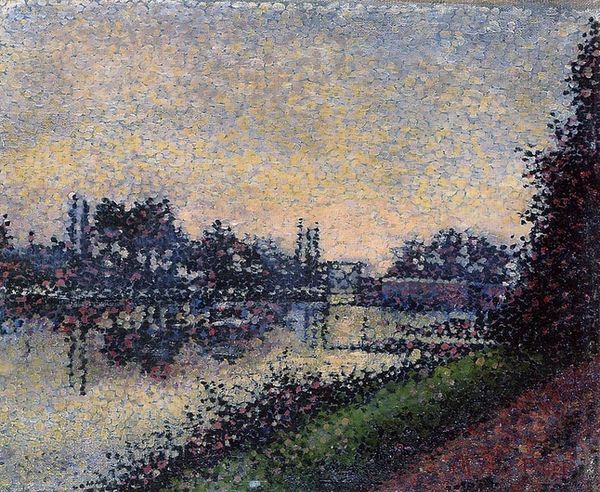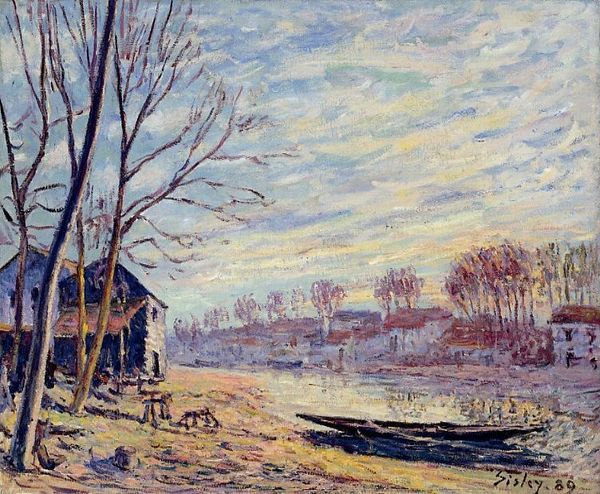
Copyright: Public domain
Editor: So, here we have Lucien Pissarro's "November Sunset on the Thames, Kew" from 1919. It's an oil painting, and there's this hazy, dreamlike quality about the light. What do you see in this piece that I might be missing? Curator: Beyond the obvious beauty of the impressionistic style, I see a layered commentary on industrialism's impact. Pissarro paints the Thames, a vital artery of the British Empire, at a time when industrialization was profoundly reshaping social structures. Note how the light, typically a source of vibrancy, is muted, almost melancholic. Does this reflect the societal anxieties of the period? Editor: That's a perspective I hadn't considered. I was focused on the more traditional landscape elements. Curator: Consider the date, 1919, so shortly after WWI. Beyond its mere aesthetic appeal, could the landscape be seen as symbolizing something broken, or irrevocably changed? Look at the skeletal trees; they aren’t merely trees but perhaps allegorical forms reflecting a generation stripped bare by conflict. What social narratives do you think Pissarro is hinting at with this tranquil, yet somber, portrayal? Editor: So you are seeing that even landscapes can hint at sociopolitical messages about a country and society's mental state at that time, even if subtly. Curator: Exactly! The impressionistic style often focused on capturing fleeting moments, yet Pissarro was born into an artistic and activist family. How might that lineage affect his choice of subject and manner of painting, which appears almost ordinary on the surface? Editor: It's amazing to consider art as an active conversation with the historical context, that landscapes aren't just pretty scenes. Curator: Absolutely. Understanding the socio-political background opens so many doors to understanding any artwork, however beautiful or simple.
Comments
No comments
Be the first to comment and join the conversation on the ultimate creative platform.
